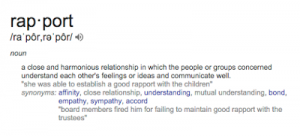Even though it’s 2015 already, social media practices can still be a hit and miss for many companies, no matter if they’re big or small. Truth is, we love to read articles about what to do and what not to do as businesses in social media, and the internet is loaded with resources or tips and tricks. However, how many companies think about the people who are working for them and what they do in social media? It’s not only for the big brands anymore. Start-ups and small companies should definitely consider policies and guidelines in social media for their employees as much as they consider online marketing strategies.
If you’re thinking about how to create the ideal online booklet for your employees or if you have already started to implement a social media policy in your company, but you’re at a loss on how to define everything so it doesn’t sound as a stiff, corporate set of rules, then this guideline will help you sort it all out and create the perfect social media conduct for your company’s employees, so that they become the brand ambassadors you’ve always wanted. Gifs included.
Let’s start with the happy things, shall we?
1) DO: Encourage people to update their job title on social networks, but to keep in mind to mention the fact that they are publishing their own opinions.
You’ve probably seen this already on Twitter, people are catching up quickly on defining their own personality in social media, even though they are affiliating themselves with your brand. This is the first step in making your employees become brand ambassadors for your company and engaging a wider community around it on social networks.

2) DO: Allow people to post about company culture, offices, team mates etc. in appropriate photos or status updates.
Building a community in social media is not an easy thing to do. But if your employees are always supporting it by posting about company culture, imagine how many positive effects this practice could have on achieving recruitment results and overall employee happiness in the work space. Hashtag office fun.
3) DO: Make sure employees know the difference between personal posts and work-related posts. For example, they can have a separate album on Facebook with work related photos, or use a hashtag on Twitter to determine the post’s affiliation (#work, #worklife, #officelife, #officefun etc.)
It’s one thing to post about having margarita on a beach and another thing to post about having margarita at the office. Unless it’s the Christmas office party…

4) DO: Speaking of work-related posts, you can suggest employees to tag the page in the description of their work-related posts, whether it’s on Instagram, Facebook, or Twitter.
If you’re looking to increase word of mouth about your company and have an active community interacting with your brand, then tagging works wonders in social media posts.
5) DO: Here’s a tip – set up an informal topic group on Facebook. This will improve organizational culture and employees will be happy to share interesting things they find on the web, organize internal events, share external events they could participate in as a team, take decisions together about office stuff or share internal photos.
Your internal newsletter can get a whole different look and feel if you pay attention to their interests, and what a better way than a discussion group on Facebook? Be smart and use it to inform people (not just about your social media guideline, but just saying), while also encouraging employees to do so themselves.
6) DO: You can reward the people who have a good social presence and engage with the brand. Recognizing top social media stars in company emails and even sending out small prizes if you have the budget (a cup with a Facebook logo on it, a Twitter pillow etc.) could increase positivity around your brand without trying too hard.
Again, your employees can become your brand’s ambassadors, and they need to be pampered and well taken care of. If they love the company they are working for, this can turn into something fun to do outside working hours and keep them on track with the social media conduct.

7) DO: Define an acceptable extent of social media use during office hours.
People are there to work, and not spend countless hours worrying if they did the right thing by sharing a post from your page.
In good faith, we trust you got the key points of what to think about when you structure the DOs of your social media guideline, therefore let’s get to the DON’Ts, which have the same amount of importance and give you a better insight of how to handle employee posts online.
1) DON’T: Don’t allow employees to post content that could easily be viewed as obscene, threatening or intimidating or even might constitute harassment or bullying.
You’re probably thinking it could never happen, and you’re also probably right. But better safe than sorry, true?

2) DON’T: Don’t let any incorrect, confidential or non-public content about the company or your clients be posted on social media; make sure employees know exactly what the conduct is and where the company stands.
This differs from company culture posts because it’s meant to address the official posts or updates for your brand. If you are encouraging people to share your new rebranded website, for example, make sure that everyone who does it knows the updated version.
3) DON’T: Related to the one above, employees should not give advice to clients via social media. Remind people that they should forward any questions they receive to the appropriate department/ people.
You want to be consistent and not distribute any fake information on social networks. Being clear about your brand is something employees should support themselves, so make sure everything that involves the official accounts is current.
4) DON’T: Don’t have a policy prohibiting negative or contradictory conversations with or about co-workers or supervisors in social media.
People are still people at the end of the day and these kind of instances may occur from time to time. Remember that social media is an environment for people to express themselves, and your employees will restrain from giving feedback in the future if they are not allowed to express their opinion online or anywhere else. Going back on common sense, it’s very likely that they are able to keep a good conduct when it comes to a disagreement in social media.

5) DON’T: Another good tip for your social media guideline is not to let employees reply to questions or to negative comments on the official pages, unless they are the Social Media Manager whose job is to do exactly that.
If your goal is to be professional, make sure you handle it well. Going back to the second DON’T, this is a reinforcement of having correct information on all social platforms.
6) DON’T: Do not encourage a cocky attitude of the employees when it comes to the product they are working on.
It’s good to be proud about where you work and what you do, but at the same time, being arrogant about it on social media creates a bad reputation and keeps from networking with peers.
7) DON’T: Do not prohibit employees from posting or talking about their wages or hours worked.
This is already a clause in most employing contracts. Keep in mind that people are creating offline communities where this could be a discussion topic, and it wouldn’t be fair for them to hide things they are concerned about. Plus, if you have some competitive offers, then all for the better.
All in all, whether you’re a small company or an emerging start-up, an internal social media strategy can only bring you advantages, no matter if you’re trying to create a community around your brand or going all for leads. You will definitely see improvements of collaboration and communication and at the same time drive credibility by having your employees become brand ambassadors and influencers in social media.

Did this article help you better define your internal social media guideline? What else do you think deserves to be on the DOss and DON’Ts list? Let us know in the comments.
Gifs via, via, via, via, via, and via.
(393)
Report Post









